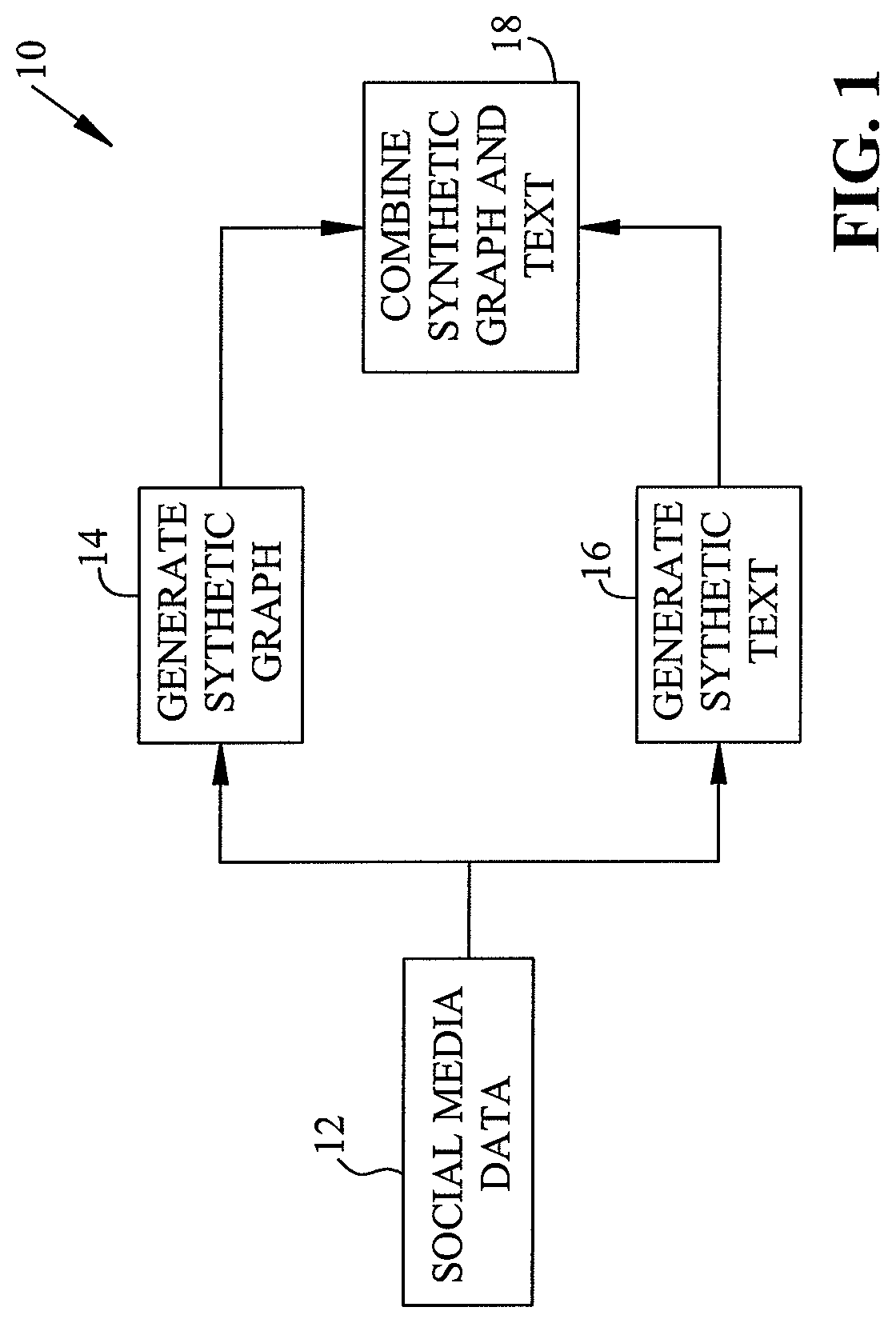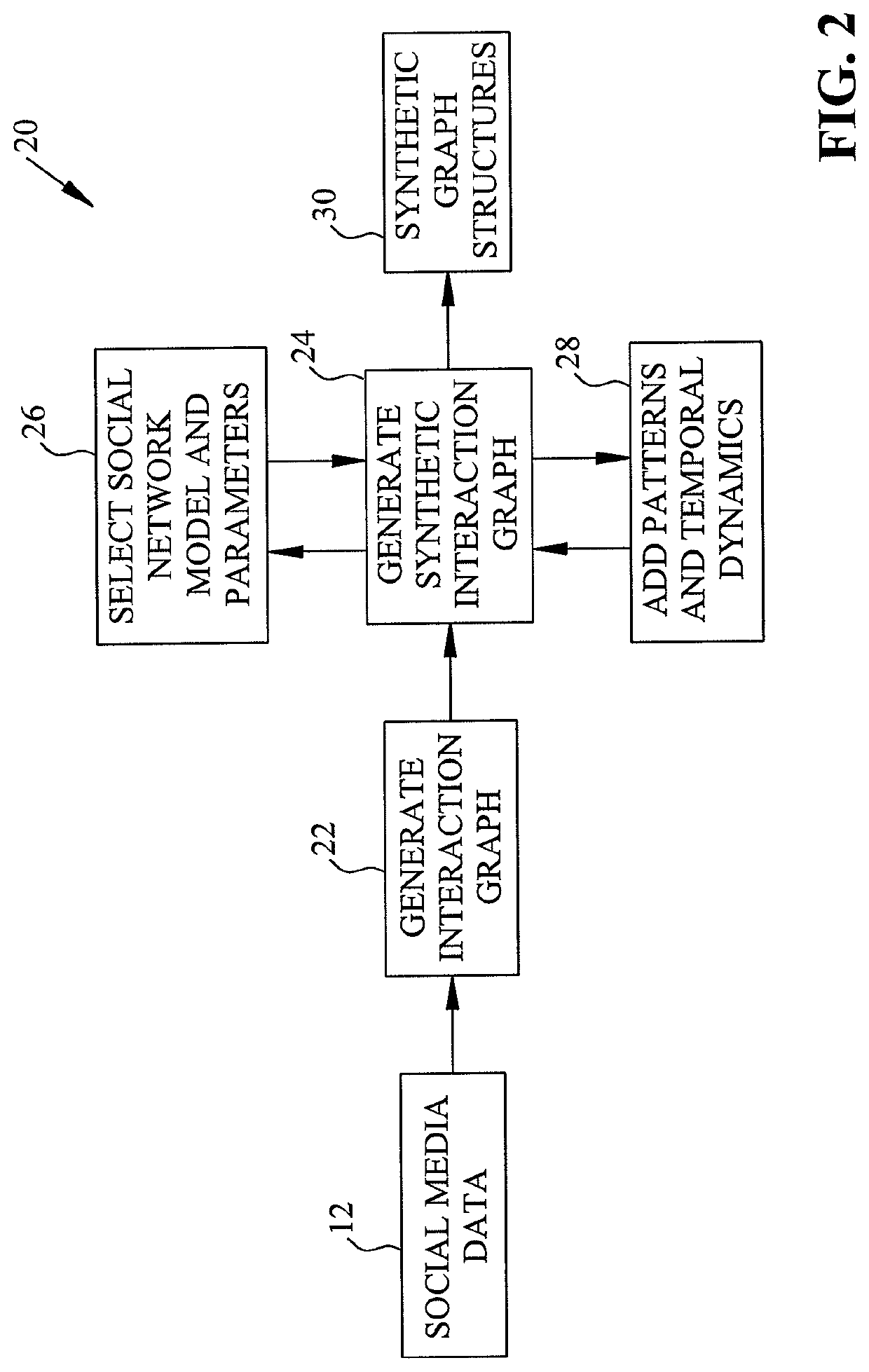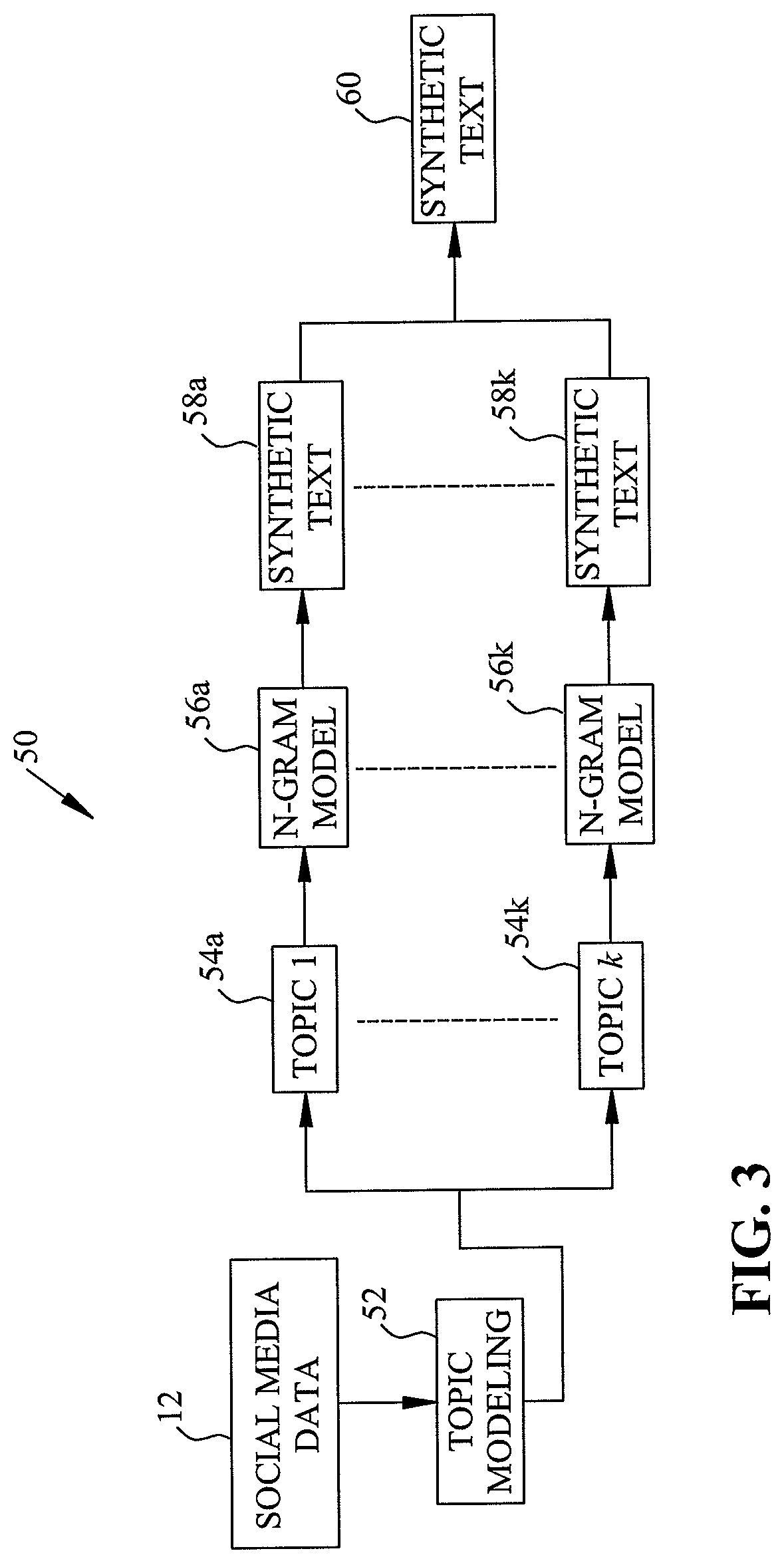System and means for generating synthetic social media data
a social media data and system technology, applied in the field of system and means for generating synthetic social media data, can solve the problems of reducing the time complexity of graph fitting, reducing the accuracy of graph fitting, and reducing the complexity of graph fitting
- Summary
- Abstract
- Description
- Claims
- Application Information
AI Technical Summary
Benefits of technology
Problems solved by technology
Method used
Image
Examples
Embodiment Construction
[0018]For the purposes of promoting an understanding of the principles of the invention, reference will now be made to the embodiments illustrated in the drawings, which are described below. It will nevertheless be understood that no limitation of the scope of the invention is thereby intended. The invention includes any alterations and further modifications in the illustrated devices and described methods and further applications of the principles of the invention, which would normally occur to one skilled in the art to which the invention relates.
[0019]Now referring to FIG. 1, a diagram shows there are three main steps in generating synthetic social media data is shown generally indicated as 10. Social media data as an input is indicated as 12 and from that synthetic graph structures are generated 14 and synthetic text is generated 16. The last step is combining synthetic graph and synthetic text structures 18 through the generation of social media entities.
[0020]Means to generate...
PUM
 Login to View More
Login to View More Abstract
Description
Claims
Application Information
 Login to View More
Login to View More - R&D
- Intellectual Property
- Life Sciences
- Materials
- Tech Scout
- Unparalleled Data Quality
- Higher Quality Content
- 60% Fewer Hallucinations
Browse by: Latest US Patents, China's latest patents, Technical Efficacy Thesaurus, Application Domain, Technology Topic, Popular Technical Reports.
© 2025 PatSnap. All rights reserved.Legal|Privacy policy|Modern Slavery Act Transparency Statement|Sitemap|About US| Contact US: help@patsnap.com



